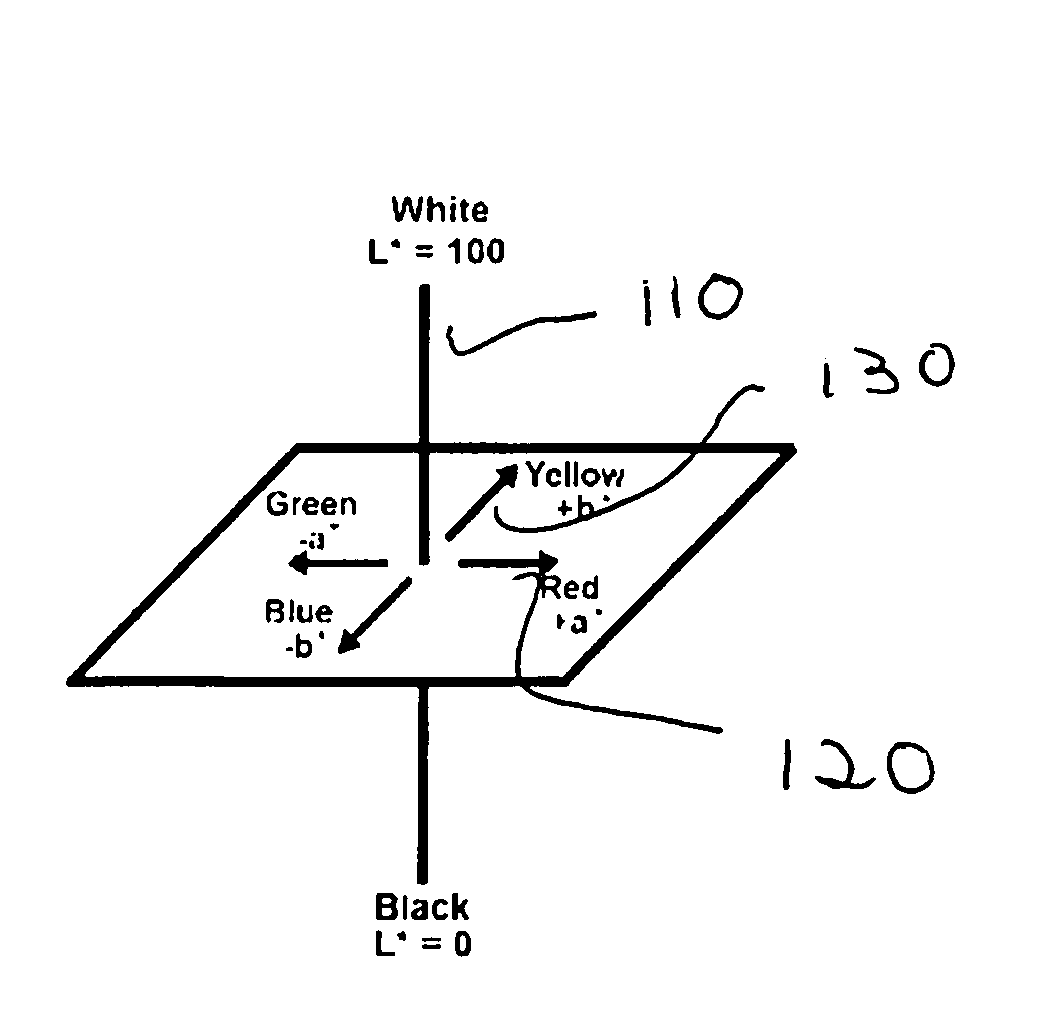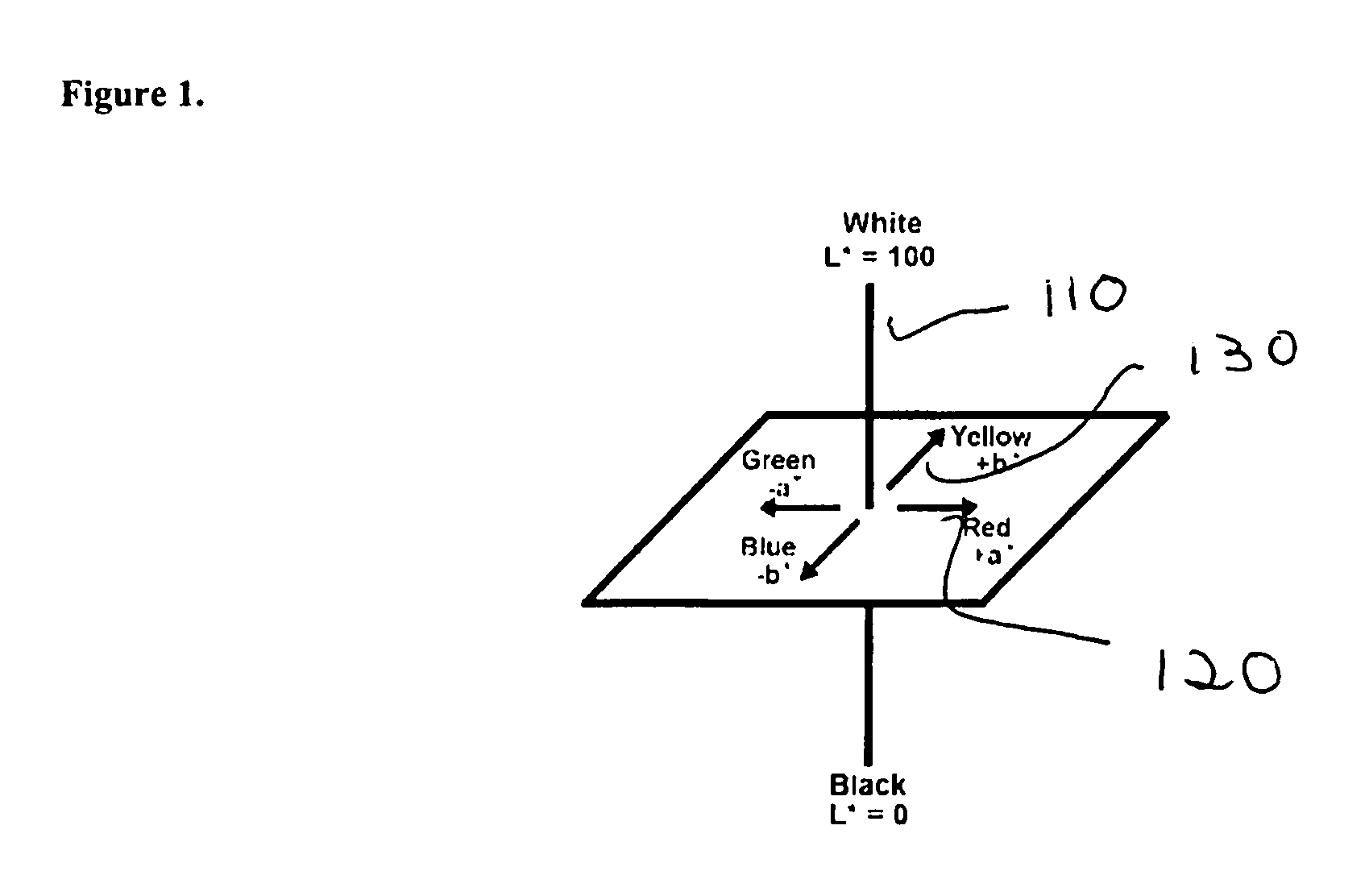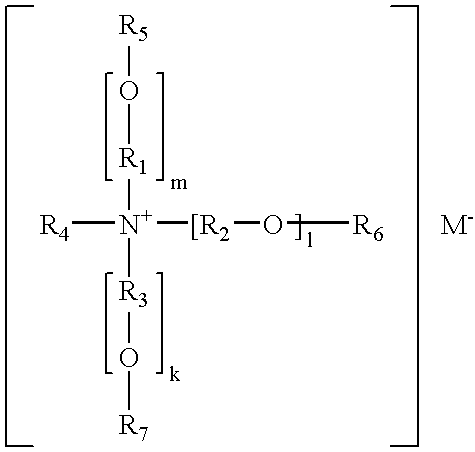Organoclay suitable for use in halogenated resin and composite systems thereof
a technology of organoclay and halogenated resin, which is applied in the field of improved organoclay compositions, can solve the problems of limited application success, black plastic quickly turns black and brittle, etc., and achieves the effect of improving compatibility and enhancing material properties
- Summary
- Abstract
- Description
- Claims
- Application Information
AI Technical Summary
Benefits of technology
Problems solved by technology
Method used
Image
Examples
example 1
[0052]Bentonite and hectorite based organoclays were prepared with Ethoquad T / 13-27W, a tallow triethanol ammonium acetate compound. In a typical synthesis, 110 mMol of quat / 100 g of clay, 100% active clay basis, was reacted with clay slurry kept at 65° C. using moderate mixing. After 30 minutes, the reaction was stopped and the organoclay product was isolated by filtering the slurry. The organoclay was dried at 105° C., milled to a fine powder and sieved through a 200 mesh screen. Five weight percent of the organoclay was added to PVC (Georgia Gulf 8850) and compounded in a Brabender mixer for 10 minutes at 170° C. The PVC / bentonite / Ethoquad T / 13-27W composite showed a total color change, ΔE, of 15.1 and the PVC / hectorite / Ethoquad T / 13-27W composite showed a total color change, ΔE, of 21.6.
[0053]Bentonite and hectorite based organoclays were also prepared with Ethoquad HT / 12, a methyl diethanol hydrogenated tallow chloride compound. Five weight percent of the organoclay was added t...
example 2
[0055]Organoclays were produced using white bentonite clay. The CEC for this white bentonite clay was about 105 mMol / 100 gram clay (dry basis). In a typical organoclay preparation procedure, clay slurry was charged to a reaction vessel and the slurry was heated to about 65° C. Next, a desired quantity of a quaternary ammonium compound was added to the reactor and the contents were stirred for about 45 minutes. Enough quaternary ammonium compound was added to satisfy 100% of the clay cation exchange capacity. The flocculated organoclay suspension was filtered, dried at 105° C. in a forced air oven and then milled and sieved to −200 mesh.
[0056]PVC / organoclay composites were prepared using a Brabender mixer. The PVC used in this example is clear, rigid PVC (Georgia Gulf 9209). PVC was first charged to the mixing bowl and softened at 170° C. prior to organoclay addition. Once the organoclay was added, the composite was compounded at 50 rpm for 12 minutes, after which the composite was r...
example 3
[0059]PVC / Organoclay composites were prepared as in Example 3 using a flexible, calcium carbonate filled PVC (Georgia Gulf 8850). The organoclays were prepared with either bentonite or hectorite clay. All organoclays were formulated with 110 mMol quat / 100 grams clay (dry basis). The cation exchange capacity (CEC) for the Wyoming bentonite clay used in this example was about 98 mMol / 100 gram clay (dry basis) whereas the hectorite clay CEC is about 75 mMol / 100 grams (dry basis). The color changes measured for the various PVC / Organoclay composites are shown in Table 3.
TABLE 3Organoclay formulationColor of theExperimentin PVCPVC composite#ClayQuat usedΔL*Δa*Δb*ΔE*3.1BentoniteTriethanol tallow−9.55.510.415.1alkyl quat3.2Diethanol−2616.68.632methylhydrogenatedtallow alkyl quat3.3HectoriteTriethanol tallow−10.410.715.621.6alkyl quat3.4Diethanol−35.218.60.139.8methylhydrogenatedtallow alkyl quat
[0060]As shown in Table 3, the PVC / Bentonite Triethanol tallow alkyl quat composite showed a chan...
PUM
| Property | Measurement | Unit |
|---|---|---|
| pKa | aaaaa | aaaaa |
| temperatures | aaaaa | aaaaa |
| temperature | aaaaa | aaaaa |
Abstract
Description
Claims
Application Information
 Login to View More
Login to View More - R&D
- Intellectual Property
- Life Sciences
- Materials
- Tech Scout
- Unparalleled Data Quality
- Higher Quality Content
- 60% Fewer Hallucinations
Browse by: Latest US Patents, China's latest patents, Technical Efficacy Thesaurus, Application Domain, Technology Topic, Popular Technical Reports.
© 2025 PatSnap. All rights reserved.Legal|Privacy policy|Modern Slavery Act Transparency Statement|Sitemap|About US| Contact US: help@patsnap.com



